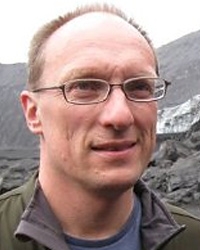Multiphysics Joint Inversion: Simply Too Complex?
Presenter
Stefan Finsterle
Staff Scientist, Energy Geosciences Division
Lawrence Berkeley National Laboratory
Abstract
The difficulty of the questions addressed by numerical models has steadily increased, so has the complexity of the environmental and energy resource problems that need to be tackled. Multi-physics simulators developed to handle coupled thermal, hydrological, geochemical, and mechanical processes are powerful analysis tools. However, if intended as predictive models, they require a multitude of site-specific, model-associated, scale-dependent, and process-related input parameters. Moreover, conceptual decisions and assumptions about the model structure may have strong, nonlinear impacts that are difficult to evaluate. Increased model complexity comes with increased data needs for model calibration. The quantitative inclusion of geophysical or geomechanical data within a multi-physics joint inversion framework may add the information needed to determine (a) the structure of the geologic formation, and (b) coupled-process parameters with sufficient accuracy and resolution. We will discuss the challenges of the model development process, demonstrate the multi-physics joint inversion approach, and comment on the need and practical issues related to determining the appropriate model structure.
About
Stefan Finsterle has more than 20 years of experience in the application of multiphase flow and transport simulators to various, complex subsurface systems. He received his doctorate in environmental engineering from the Swiss Federal Institute of Technology (ETH) in Zürich, Switzerland, before he moved to Berkeley, California, where he performs use-inspired research in geothermal reservoir engineering, nuclear waste isolation, carbon sequestration, and environmental remediation projects. Stefan is the main developer of the iTOUGH2 multi-physics joint inversion framework. He is interested in the analysis of laboratory and field data through a formal model calibration procedure, specifically using the joint inversion of hydrogeological, geophysical and geomechanical data for the characterization of heterogeneous subsurface systems.
